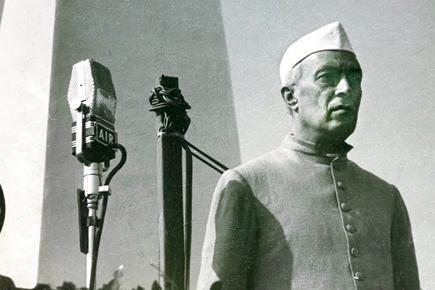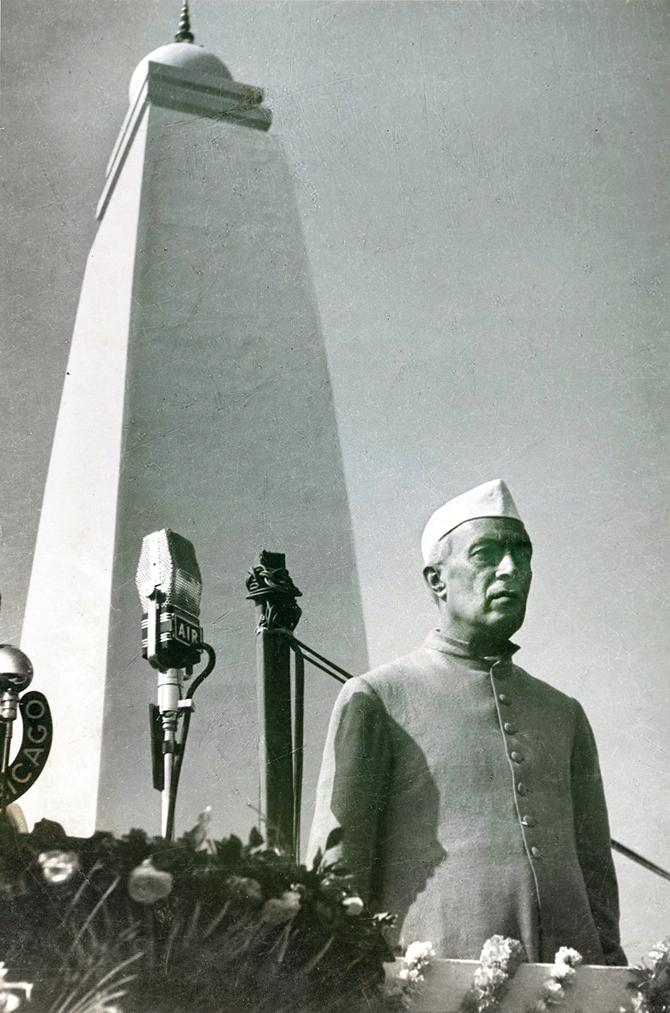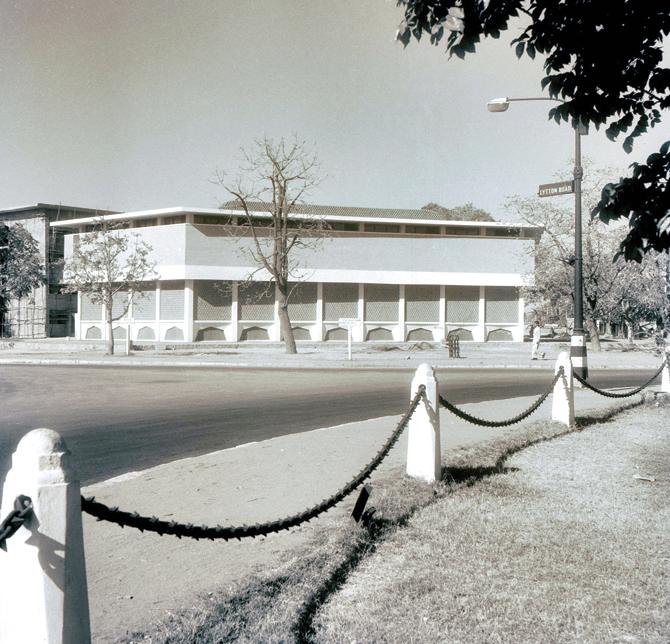This weekend, photographer and activist Ram Rahman shares the story of Nehruvian architecture that shaped modernDelhi, at a city museum

Jawaharlal Nehru at Gandhi Ghat.
![]() New Delhi was the site for a remarkable experiment in modern architecture immediately after Independence. Under the active inspiration of then Prime Minister, Pandit Jawaharlal Nehru, an entire generation of young architects migrated to the capital to build the institutions and housing needed for a newly independent nation.
New Delhi was the site for a remarkable experiment in modern architecture immediately after Independence. Under the active inspiration of then Prime Minister, Pandit Jawaharlal Nehru, an entire generation of young architects migrated to the capital to build the institutions and housing needed for a newly independent nation.
ADVERTISEMENT

Jawaharlal Nehru at Gandhi Ghat. Pics courtesy/ Habib Rahman
In the month of Nehru’s 125th birthday, photographer, artist, curator, designer and activist Ram Rahman, will deliver a public lecture titled, Nehru and the Delhi Modern Moment: Architecture and Design in Delhi 1947-1980 at Dr Bhau Daji Lad Mumbai City Museum this Saturday. The session will delve into this chapter of post-Independence history that has formed New Delhi, as we know it.

A view of Rabindra Bhavan in New Delhi
“I would be looking at what is broadly known as the Nehruvian era. Something which continued from 1947 to 1980. This was when most of modern Delhi was designed under Nehru’s direct involvement,” Rahman shares.
He calls this era, one of great confidence for Indian architects and mentions that many young architects had then moved to the capital under Nehru’s encouragement. The imprints of their idea transcended just buildings and are characteristic of even furniture and interiors of houses of the time.
“Nehru’s direct impact on India’s modern architecture is little known. My father, Habib Rahman, had a personal experience of working with Nehru between 1949 and 1964. Nehru had greatly admired Habib’s memorial to Gandhi in Barrackpore, which he inaugurated in 1949, and had organised his move to the CPWD in Delhi,” he shares.
“What happened in the capital is different from Chandigarh, which was designed by European architects because in this case the architects were all Indian. Many of them had just started their careers then. Eventually, they went on to form a tradition that lasted two generations,” he recalls.
He asserts that the scale of what happened in Delhi at the time was huge and unique and cannot be found in any other city in the country.
On: November 21, 6.30pm
At: Dr Bhau Daji Lad Mumbai City Museum, 91 A, Rani Baug, Veer Mata Jijabai Bhonsle Udyan, Byculla (E).
Call: 23731234
 Subscribe today by clicking the link and stay updated with the latest news!" Click here!
Subscribe today by clicking the link and stay updated with the latest news!" Click here!






